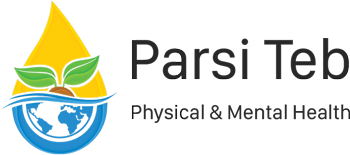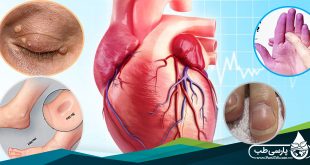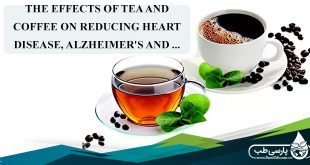Arrhythmia (palpitations)
This factsheet is for people who have an arrhythmia, or who would like information about it.
An arrhythmia is a disturbance of the normal electrical rhythm of the heart. Arrhythmias (sometimes called palpitations) may occur continuously or just occasionally.
Animation – The different types of arrhythmiaAbout arrhythmias symptoms of arrhythmias caused by arrhythmias diagnosis of arrhythmias treatment of arrhythmia questions and answers related topicsRelated Bupa products and services further information sources the different types of arrhythmia
A Flash plug-in is required to view this animation.
Legal notices
About arrhythmias
The heart
Your heart pumps oxygen-rich blood through a network of blood vessels (the arteries) to tissues including organs, muscles and nerves, all-around your body.
The heartbeat
The normal electrical pattern of a heartbeat starts when electrical impulses are conducted to the top chambers of your heart (left atrium and right atrium – see illustration). This causes the atria to contract, pushing your blood into the two lower, larger, chambers (left ventricle and right ventricle – see illustration). The electrical impulse is then transmitted to the ventricles causing them to contract. This pushes the blood out of your heart to your lungs and the rest of your body.
Your heart will normally beat between 60 and 100 times a minute when you’re resting.
The chambers and electrical conducting system of the heart
Examples of changes in your heart rate that don’t usually cause problems include the following.
Sinus tachycardia
This is when your heartbeat is still regular, but faster than usual (more than 100 beats per minute). This is normal in certain situations, such as during exercise or if you have a fever, but may also occur at other times for no obvious reason. Conditions such as an overactive thyroid gland or anaemia may result in sinus tachycardia.
Sinus bradycardia
This is when your heartbeat is still regular, but slower than usual (fewer than 60 beats per minute). Bradycardia is common in athletes but can occur if you’re exposed to the cold and have a low body temperature or are feeling unwell.
Ectopic beats
These are extra heartbeats and are very common – most people have one every 24 hours. You may feel an ectopic beat as a missed beat or a thump from your heart. They are most noticeable when you’re resting. Ectopic beats aren’t dangerous and won’t damage your heart.
Types of arrhythmia
There are a number of different types of arrhythmia, including those listed below. Most arrhythmias that come from the top of the heart (supraventricular or atrial) may cause you to have symptoms but aren’t life-threatening. Arrhythmias that arise from the ventricles (ventricular) can be fatal.
Atrial fibrillation (AF)
AF occurs when the electrical impulses in the atria become disorganised, overriding the heart’s normal rate and rhythm. This causes the atria to contract in an irregular manner or ‘fibrillate’. You may notice that your heartbeat is irregular or feels uneven. Attacks of AF can last from a few seconds to days.
AF can lead to a blood clot forming in your heart. This is because your blood isn’t able to flow properly through your heart. If a clot forms, it can travel to your brain and cause a stroke.
Supraventricular tachycardia (SVT)
Most SVTs are caused by the occurrence of an extra electrical pathway in the heart, between the atria and the ventricles. This allows electrical impulses to ‘short-circuit’ and re-enter the atria. The impulses end up travelling around the heart in a circle.
SVT can make your heartbeat very quickly; up to 160 beats per minute. An attack of SVT may only last for a few seconds but it can last for several hours.
Ventricular tachycardia (VT)
In VT, the electrical impulses fire too quickly from the ventricles, causing blood to be pumped out quicker than normal. The ventricles may not have enough time to fill up properly with blood.
If the attack lasts for 30 seconds or more (sustained ventricular tachycardia), it can progress to a condition called ventricular fibrillation.
Ventricular fibrillation (VF)
In VF, electrical impulses start firing from multiple sites in the ventricles, very rapidly and in an irregular rhythm. This makes the heart quiver and unable to beat properly. If prompt treatment isn’t given, you may have a cardiac arrest, which can be fatal.
Someone who has ventricular fibrillation will lose their pulse, and will quickly become unconscious and stop breathing. You should call for emergency help immediately if you witness someone collapse and stop breathing. If the person is unconscious and isn’t breathing normally, you should perform emergency resuscitation (cardiopulmonary resuscitation or CPR), but only if you know-how.
Heart block
If you have heart block, it means there is a problem affecting how the electrical impulses are transmitted through your heart. Heart block can occur in the atrioventricular node or in the muscle fibres that lead into the ventricles (see illustration).
Symptoms of arrhythmias
With some types of arrhythmia, you may not get any symptoms. If you do get symptoms, they will depend on the type and severity of your arrhythmia. Symptoms may include:
palpitations – a palpitation is an unpleasant awareness of your heartbeat, often described as a thumping in your chest
dizziness
fainting or collapsing
breathlessness
chest pain
fluid in your lungs (pulmonary oedema)
Rarely, some types of arrhythmia may result in sudden death.
Causes of arrhythmias
An arrhythmia can be caused by conditions including:
underlying heart disease
heart valve problems
thyroid disease
high blood pressure
Wolff-Parkinson-White syndrome – an electrical abnormality in the heart that can cause SVT and AF
heart attack
coronary artery disease
inflammation of the heart
pneumonia
Some types of arrhythmia may be caused by certain triggers. For example, certain medicines can cause heart block or SVT, alcohol can cause AF or SVT, caffeine and smoking tobacco or cannabis can cause SVT.
Sometimes there may be no known cause for an arrhythmia.
Diagnosis of arrhythmias
Your GP will ask you about your symptoms and examine you. He or she may also ask you about your medical history. If necessary, your GP will refer you to a cardiologist, a doctor specialising in identifying and treating conditions of the heart and blood vessels.
Your GP or cardiologist may do tests including:
blood tests
an ECG (electrocardiogram) – a test that measures the electrical activity of your heart to see how well it’s working
a 24-hour heart monitor (also known as an ambulatory ECG)
an echocardiogram
You may have an electrophysiological study. A thin flexible tube (called an electrode catheter) is inserted into an artery or vein, usually in your groin, and threaded up to your heart. The catheter stimulates your heart and records the electrical impulses by doing an internal ECG.
Treatment of arrhythmias
Your treatment will depend on the type, cause and severity of your arrhythmia.
Self-help
Sometimes, such as with ectopic beats, all you may need is reassurance that your arrhythmia won’t cause serious problems. You should steer clear of any triggers of your arrhythmia that you know about.
Medicines
Your doctor may prescribe medicines to help control your heart rhythm. These can include medicines to slow your heart rates, such as beta-blockers, or anti-arrhythmic drugs, such as amiodarone and flecainide.
If you have AF, you may be advised to take blood-thinning medicines regularly, such as warfarin, to reduce your risk of blood clots forming.
Surgery
The type of surgery that you have will depend on your condition. Your doctor will advise you which surgery is best for you.
Cardioversion for AF
In this procedure, a controlled electrical current is applied to your chest via a machine called a defibrillator, to help restore your heart to its normal rhythm. Cardioversion is normally done under general anaesthetic. This means you will be asleep during the procedure.
Pacemaker for heart block or AF
A pacemaker is a small device, usually implanted under the skin in the upper chest. Electrical signals are sent from the pacemaker to your heart to stimulate it to beat at a specific rate. Pacemakers are usually fitted under local anaesthetic; this completely blocks the feeling from your chest area and you will stay awake during the operation.
Catheter ablation therapy for AF, SVT or VT
In this procedure, the abnormal areas in your heart are identified and destroyed. Catheter ablation therapy is carried out using the same catheters used for electrophysiological testing. The catheter emits radiofrequency energy, destroying the area that is causing the abnormal rhythm.
The procedure is normally done under sedation; this relieves anxiety and helps you to relax.
You may need to have a pacemaker implanted after catheter ablation.
Implantable cardioverter-defibrillator for VT or VF
An implantable cardioverter-defibrillator (ICD) is similar to a pacemaker. However, an ICD can monitor your heart rhythm and deliver a small electric shock to return your heartbeat to normal if it detects a problem. ICDs are usually fitted under local anaesthetic; this completely blocks the feeling from your chest area and you will stay awake during the operation.
 Parsi Teb Physical and Mental Health Journal
Parsi Teb Physical and Mental Health Journal 



